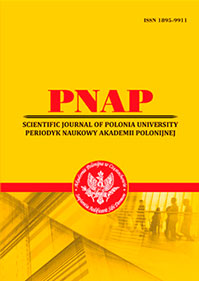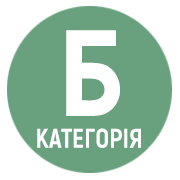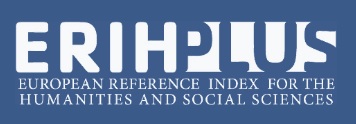ПАРАДОКС ПЕРЕКЛАДАЦЬКОЇ «ПОМИЛКИ»
Анотація
Проблема оцінки якості перекладу не зникає з фокуса уваги вчених упродовж усього існування науки про переклад і навіть довше – від самої появи перекладених текстів як таких. При цьому увага концентрується на зіставленні текстів оригіналу та перекладу і виявленні розбіжностей між ними.В англомовному перекладознавстві на позначення цих розбіжностей домінує термін «translation errors», хоча поряд із ним функціонує ще один – «translation mistakes». Помітно, що у відношенні до вжитку цих двох термінів немає суголосності. Існує принаймні три підходи до цього. Найбільша група дослідників користується терміном «translation errors» і відносить до них усі розходження між ВТ та ПТ, поділяючи їх відповідно на більш конкретні випадки. Типологізування відбувається за різними критеріями, серед яких – поділ за причинами появи різночитань, за серйозністю їхнього впливу на сприйняття перекладу читачем іншої культури, за лінгвістичними параметрами, за проблемами, пов’язаними з розумінням вихідного тексту і зі здатністю відтворити оригінал у перекладі без утрат. Інша група науковців оперує обома термінами «translation errors» і «translation mistakes», уважаючи їх різними у відношенні до тих розбіжностей, що вони позначають. Нарешті, є ще одна група дослідників, які також уживають обидва терміни, але не розмежовують їх, використовуючи їх взаємозамінно.В українському перекладознавчому обігу функціонує тільки один термін – «перекладацька помилка», що відповідає загалом першому з названих англомовних підходів, але й породжує певні ускладнення, які витікають із того, що в українській мові «помилка» позначає як відхилення від норми, так і її викривлення. В англійській мові цей нюанс долається часто саме завдяки розділенню між «error» і «mistake», а от в українській перекладознавчий критиці наявність лише одного терміна може призводити до некоректної або навіть образливої оцінки праці перекладачів, оскільки не все, що позначається за допомогою терміна «помилка», виявляється нею насправді.Статтю спрямовано на постановку проблеми використання терміна на позначення різночитань між оригіналом і перекладом. Через аналіз тлумачень англомовних та україномовного термінів, через роз’яснення причин виникнення таких різночитань, а також через приклади, коли автори порівняльно-аналітичних розвідок із перекладознавства називають помилковими варіанти, які характеризуються неповнотою відтворення змісту оригіналу, але не викривляють його, в анотованій роботі пропонується дискусія щодо можливого уточнення як самого терміна («перекладацька помилка»), так і взагалі підходу до цього розділу перекладознавчих досліджень.
Посилання
Бацевич Ф. Основи комунікативної девіатології. Львів : ЛНУ ім. Івана Франка, 2000. 236 с.
Білоус О.М. Теорія і технологія перекладу. Курс лекцій: доопрацьований та доповнений : навчальний посібник. Кіровоград : РВВ КДПУ ім. В. Винниченка, 2013. 200 с.
Борщовецька В.Д., Ігнатенко В.Д. Ерратологічний аспект навчання анотативного і реферативного видів перекладу. British Educational Research Journal. 2018. Vol. 44. Is. 6. C. 1584–1585.
Веремко-Бережний О. Перекладацька клептоманія чи текстовий тероризм? Всесвіт. 2010. № 5–6. URL: https://www.vsesvit-journal.com/old/content/view/752/41/ (дата звернення: 24.04.2025).
Воробець С.В. Типи перекладацьких помилок студентів в умовах близькоспорідненого перекладу. Наукові записки Ніжинського державного університету ім. Миколи Гоголя. Психолого-педагогічні науки. 2014. № 3. С. 131–134.
Всесвітній словник української мови. URL: https://uk.worldwidedictionary.org (дата звернення: 22.04.2025).
Дорофєєва М. Дискурсивні помилки у перекладі офіційно-ділових текстів (синергетичний аспект). Наукові записки. Серія «Філологічні науки». 2018. Вип. 164. С. 476–481.
Зінукова Н.В. Типологія помилок в усному професійному перекладі. Вісник Університету імені Альфреда Нобеля. Серія «Філологічні науки». 2021. № 2(22). С. 239–248.
Куляс П.П. Типологія помилок : підручник-монографія. Київ : НПУ імені М.П. Драгоманова, 2015. 464 с.
Негребецький О. Болек і Льолек чубляться? Всесвіт. 2010. № 9–10. https://www.vsesvit-journal.com/old/content/view/792/41/ (дата звернення: 21.04.2025).
Основи теорії редагування перекладів : конспект лекцій / уклад. О.В. Ребрій. Харків : ХНУ імені В.Н. Каразіна, 2010. 88 с.
Редагування перекладів : навчальний посібник / уклад. Т.Є. Гетьман. Біла Церква : БНАУ, 2019. 108 с.
Сілютіна І.О. Лексико-семантичні особливості перекладацьких помилок у процесі перекладу. Topical issues of translation of specialized texts: Scientific monograph. Riga, Latvia : Baltija Publishing, 2023. C. 155–182.
Шапошник О.М. Проблема збереження текст-типологічних ознак оригіналу у перекладі дитячої літератури (на матеріалі оригіналу та перекладу текста Йоуна Колфера «Артеміс Фаул»). Мова і культура. 2012. Вип. 15. Т. ІІІ(157). С. 423–429.
Conde T. Translation versus Language Errors in Translation Evaluation. Assessment Issues in Language Translation and Interpretation / ed. : Dina Tsagari and Roelof van Deemter. Frankfurt am Main, Berlin, Bern, Bruxelles, New York, Oxford, Wien: Peter Lang, 2013. Pp. 97–112.
Cozma M. Translation Errors Across Genres: A Research Perspective. Romanian Journal of English Studies. 2019. № 16 (1). Pp. 84–96.
Cuc Ph. An Analysis of Translation Errors: A Case Study of Vietnamese EFL Students. International Journal of English Linguistics. 2018. Vol. 8, No. 1. Pp. 22–29.
Fuggle L. What»s the best translation of War and Peace by Leo Tolstoy? tolstoy therapy. September 29, 2022. URL: https://www.tolstoyther-apy.com/best-translation-war-and-peace/ (дата звернення: 21.04.2025).
Goff-Kfouri C.A. Testing and Evaluation in the Translation Classroom. Translation Journal. 2004. Volume 8, No. 3. URL: http://translation-journal.net/journal/29edu.htm (дата звернення: 21.04.2025).
Hagemann S. Translation «errors». Teaching, negotiation, and power. Trans-Kom. Zeitschrift für Translationswissenschaft und Fachkommunikation. 2020. Volume 13, Issue 1. Pp. 1–22. URL: http://www.trans-kom.eu/bd13nr01/transkom_13_01_01_Hagemann_Errors.20201113.pdf (дата звернення: 23.04.2025).
Hahn D., Riaz F. What makes a good literary translator? Voices. 15 October 2014. URL: https://www.britishcouncil.org/voices-magazine/what-makes-good-literary-translator (дата звернення: 21.04.2025).
Hansen G. A Classification of Errors in Transla- tion and Revision. CIUTI-Forum 2008 «Enhancing Translation Quality: Ways, Means, Methods» / editors : Martin Forstner, Hannelore Lee-Jahnke & Peter A. Schmitt. Bern, Berlin, Bruxelles, Frankfurt am Main, New York, Oxford, Wien : PETER LANG, 2009. Pp. 313–326.
Hansen G. Translation «errors». Handbook of Translation Studies. In 5 vol. / Editors : Gam- bier Y., van Doorslaer L. Vol. 1. Amsterdam / Philadelphia : John Benjamins Publishing Company, 2010. Pp. 385–388.
Lefevere A. Translation, Rewriting, and the Manipulation of Literary Fame. London, New York: Routledge, 2017. 134 p.
Mossop B. Objective Translational Error and the Cultural Norm of Translation. Traduction, terminologie, rédaction. 1989. Volume 2, numero 2. Pp. 55–70. URL: https://doi.org/10.7202/037046ar (дата звернення: 16.04.2025).
Ní Riordáin C., Schwerter S. Introduction. Speaking Like a Spanish Cow: Cultural Errors in Translation / eds.: Cliona Ní Riordáin, Stephanie Schwerter. Stuttgart : ibidem-Verlag / ibidem-Press, 2019. Pp. XVII–XX.
Nida E.A. The Most Common Errors in Translating. The Bible Translator. 1950. Volume 1, Issue 2, April. Pp. 51–56.
Nord C. Translating as a Purposeful Activity: Functionalist Approaches Explained. London, New York: Routledge, 2018. 153 p.
Palumbo G. Translation Error. Palumbo G. Key Terms in Translation Studies. Continuum International Publishing Group, 2009. Pp. 125–127.
Polizzotti M. L»art de la traduction. What is the task of the translator – to be a servant to the source or to create a new work of illuminated meaning? Aeon. 9 October 2018. URL: https://aeon.co/essays/is-the-translator-a-servant-of-the-text-or- an-original-artist (дата звернення: 04.04.2025).
Putri T.A. An Analysis of Types and Causes of Translation Errors. Etnolingual. 2019. Vol. 3, No. 2. Pр. 93–103. https://doi.org/10.20473/etno. v3i2.15028
Rahmatillah K. Translation Errors In The Process Of Translation. Journal of English and Education (JEE). 2013. Vol. 7, No. 1. Pр. 14–24. https://doi.org/10.20885/jee.v7i1.4466
Saridaki E. Translation errors: A taxonomic approach and their contribution to translator training. International Journal of English Literature and Social Sciences (IJELS). 2023. Vol. 8, Issue 4. Pp. 27–32. DOI: 10.22161/ijels.84.6
Séguinot C. Understanding Why Translators Make Mistakes. Traduction, terminologie, rédaction. 1989. No. 2 (2). Pp. 73–81. https://doi.org/10.7202/037047ar
ShimaKhabir, Fumani M.R. An Assessment of the Translations of English Lyrics in World»s Six Different Music Style Based on Hurtado»s Model of Error Analysis. Linguistics and Literature Studies. 2013. Vol. 1 (3). Pp. 157–163. DOI: 10.13189/lls.2013.010304
Soltani F., Nemati A., Yamini M. An analysis of translation errors in 5 literary genres based on American Translation Association (ATA) framework. Cogent Arts & Humanities. 2020. No. 7 (1). https://doi.org/10.1080/23311983.2020.1799732
Translation quality evaluation Info pack for external contractors. European Union, 2024. URL: https://commission.europa.eu/document/download/74a0c754-81c5-4a33-9547-9f58f53d9c6e_en?filename=DGT_Translation_quality_evaluation_Info%20pack_for_FL_contractors_27.02.2024.pdf (дата звернення: 20.04.2025).
Waddington C. A positive approach to the assessment of translation errors. I AIETI. Actas del I Congreso Internacional de la Asociación Ibérica de Estudios de Traducción e Interpretación. Granada, 12-14 de febrero de 2003 / ed. : R. Muñoz Martín. Granada : AIETI, 2003. Pp. 409–426.
 ISSN
ISSN 


.png)




